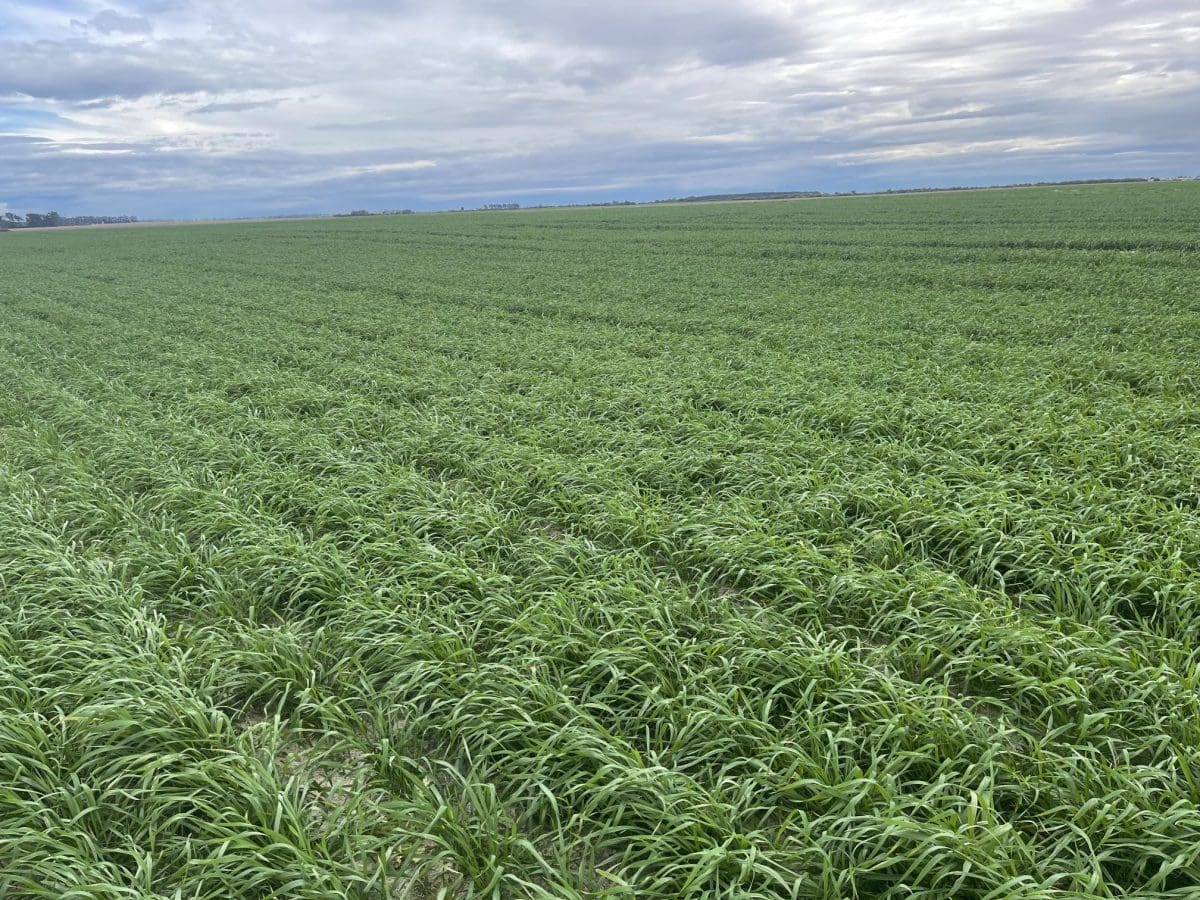
Illabo wheat planted early April and thriving in the Esperance region. Photo: John Wallace
WESTERN Australia’s winter-crop area is forecast at 8.963 million hectares (Mha), up 55,000ha, or 6 per cent from the 8.908Mha forecast in May, according to the latest Grains Industry of WA (GIWA) crop report released today.
This is an historically large crop, and has been planted on the back of high grain prices leading up to and during seeding.
The crop is in good shape for this time of the year with the recent rain arriving just in time for crops in the drier regions in the central and north of the state, and topping up moisture profiles in the southern regions of the state.
While estimated wheat area at 4.89Mha is down 60,000ha from GIWA’s previous estimate released in May, canola is up 80,000ha to 1.83Mha.
Lupins are up 35,000ha to 275,000ha, while barley area at 1.62Mha and oats at 310,000ha are unchanged.
The biggest increase has come in the Kwinana zone, where barley area is up 20,000ha, lupins is up 30,000ha oats is up 10,000ha from the May forecast.
The biggest downward revision is wheat area in the Geraldton zone, down 100,000ha to 1.2Mha.
In the Albany zone, forecasts for canola and wheat area have both been lifted 50,000ha from the May total to 450,000ha and 430,000ha respectively.
The WA grain crop is seen as being on track for another very good year following last year’s record tonnage production for all crops.
Rainfall in the northern grain-growing regions, where it was needed most, has been light so far, and more will be needed to maintain the current grain yield potential.
The soil-moisture profiles in the central and northern regions have been running down over the last two months and the early sown crops were starting to show the signs of moisture stress.
While the grain crop across the state is well set up for another huge crop, most grain growing regions, particularly those in the central and north, are going to need good winter and spring rain to exceed the 20-million-tonne (Mt) mark of total grain production again this year.
Canola plantings in the state have exceeded barley for the second year in a row and are nudging the record 1.9Mha hectares of barley planted in 2018, just prior to the China tariffs being introduced.
The canola crop is generally more advanced compared with June last year and could easily produce more than 3Mt of grain again this year if the rain keeps coming.
The wheat crop area is again up around the 5Mha mark and crops are in a similar condition to June 2021.
Wheat crops in the large wheat-growing areas of the eastern regions of the state do not quite have the same potential as compared to this time last year, although a lot of that potential was not realised due to the frosts in spring.
Away from these lower-rainfall central and northern areas, there are regions where the condition of the wheat crop is well ahead of where it was last year.
Growers have not backed off on crop inputs due to the higher costs as some may have expected.
The increase in grain prices and a good start has warranted sticking to a strategy of maximum profit based on water-limited grain-yield potential.
Good weed control upfront, even crop establishment and timely post-emergent nitrogen applications, combined with a large area planted, have set up the state for another potentially big harvest.

Source: GIWA
Further detail on crop conditions in individual WA port zones can be found on the GIWA website.

HAVE YOUR SAY